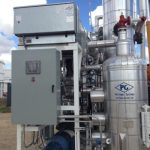Cooperation with GROHE Academy
Course Overview:
The “Developing Plumbing Skills” course, in collaboration with Grohe Academy, offers an excellent opportunity for participants to acquire essential skills in the installation and maintenance of water and sanitation systems. The course includes both practical and theoretical training focused on the latest technologies and global standards in plumbing, helping participants enhance their performance and efficiency in this vital field.
Course Objectives:
- Enhance knowledge and understanding of plumbing principles and water and sanitation systems.
- Develop practical skills in the installation and maintenance of plumbing systems.
- Familiarize participants with the latest tools and techniques used in plumbing.
- Understand the health and environmental standards related to the installation of water and sanitation systems.
- Improve efficiency and problem-solving abilities related to plumbing systems.
Training Content:
- Introduction to plumbing principles and water systems.
- Types of water and sanitation systems and their components.
- Basic plumbing tools and materials and how to use them.
- Techniques for installing pipes, valves, and pumps.
- Maintenance procedures for water and sanitation systems.
- Troubleshooting plumbing systems.
- Health and environmental standards in plumbing.
- Practical workshops to apply the skills learned.
Target Audience:
This course is aimed at plumbing technicians and professionals, civil engineers, specialists in water and sanitation systems, and engineering or technical students seeking to enhance their skills in this field. It is also suitable for small business owners looking to improve their knowledge of the installation and maintenance of water and sanitation systems.








